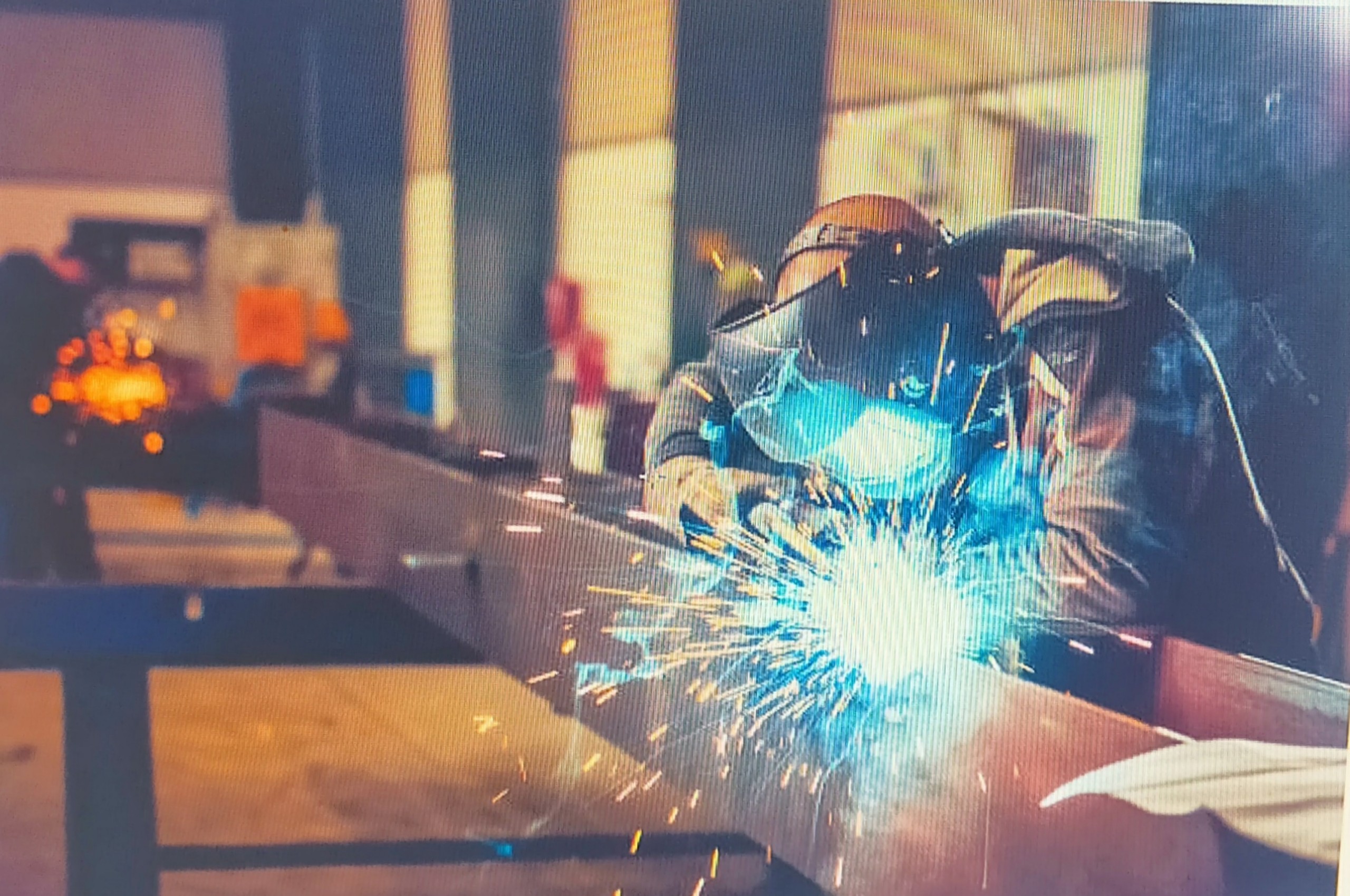In mechanical, Welders train and study a lot before being able to do it in a professional setting. But Nobody is perfect, even they are the most professional, they will make some mistakes.
Listed below are 7 of the most common welding defects, causes and troubleshooting. So, let’s welderprofessor.com read on to learn how to avoid each of them.
Most Common Welding Defects |
Cause |
Troubleshooting |
Image |
Weld Crack |
The weld crack is one of the most dangerous defects on this list. These cracks may show up at the surface of the weld or other heat-affected areas. They can be classified into cold cracks, hot cracks, or crater cracks.Cracks can be caused by several factors such as using unsuitable materials, contraction of the metal, contaminated base metal, and growth of grains. | To avoid these defects, the welder should use suitable materials, preheat the weld, clean the metal, give decent cooling, and ensure that the crack is filled properly. Using hydrogen while welding ferrous materials will cause cracks, so use something more suitable. When you preheat the weld and slow down the cooling, there are fewer chances for a crack to appear. Not filling them properly will surely cause cracks, as anyone might expect. | 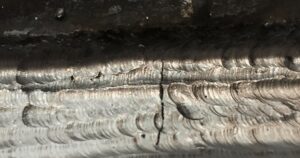 |
Undercut |
This welding imperfection is the groove formation at the weld toe, reducing the cross-sectional thickness of the base metal. The result is the weakened weld and workpiece. Causes:
• Too high weld current. • Too fast weld speed. • The use of an incorrect angle, which will direct more heat to free edges. • The electrode is too large. • Incorrect usage of gas shielding. • Incorrect filler metal. • Poor weld technique. |
• Use proper electrode angle.
• Reduce the arc length. • Reduce the electrode’s travel speed, but it also shouldn’t be too slow. • Choose shielding gas with the correct composition for the material type you’ll be welding. • Use of proper electrode angle, with more heat directed towards thicker components. • Use of proper current, reducing it when approaching thinner areas and free edges. • Choose a correct welding technique that doesn’t involve excessive weaving. • Use the multipass technique |
 |
Porosity |
Porosity occurs as a result of weld metal contamination. The trapped gases create a bubble-filled weld that becomes weak and can with time collapse. Causes:
• Inadequate electrode deoxidant. • Using a longer arc. • The presence of moisture. • Improper gas shield. • Incorrect surface treatment. • Use of too high gas flow. • Contaminated surface. • Presence of rust, paint, grease or oil. |
• Clean the materials before you begin welding. • Use dry electrodes and materials. • Use correct arc distance. • Check the gas flow meter and make sure that it’s optimized as required with proper with pressure and flow settings. • Reduce arc travel speed, which will allow the gases to escape. • Use the right electrodes. • Use a proper weld technique. |
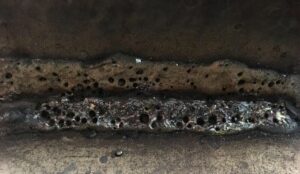 |
Spatter |
Spatter occurs when small particles from the weld attach themselves to the surrounding surface. It’s an especially common occurrence in gas metal arc welding. No matter how hard you try, it can’t be completely eliminated. However, there are a few ways you can keep it to a minimum. Causes:
• The running amperage is too high. • Voltage setting is too low. • The work angle of the electrode is too steep. • The surface is contaminated. • The arc is too long. • Incorrect polarity. • Erratic wire feeding. |
• Clean surfaces prior to welding. • Reduce the arc length. • Adjust the weld current. • Increase the electrode angle. • Use proper polarity. • Make sure you don’t have any feeding issues. |
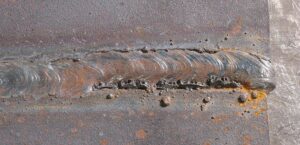 |
Slag Inclusion |
Slag inclusion is one of the welding defects that are usually easily visible in the weld. Slag is a vitreous material that occurs as a byproduct of stick welding, flux-cored arc welding and submerged arc welding. Is can occur when the flux, which is the solid shielding material used when welding, melts in the weld or on the surface of the weld zone. Causes:
• Improper cleaning. • The weld speed is too fast. • Not cleaning the weld pass before starting a new one. • Incorrect welding angle. • The weld pool cools down too fast. • Welding current is too low. |
• Increase current density. • Reduce rapid cooling. • Adjust the electrode angle. • Remove any slag from the previous bead. • Adjust the welding speed. |
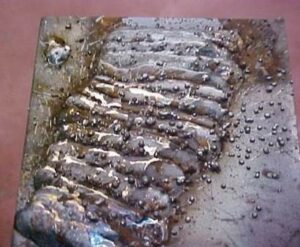 |
Incomplete fusion |
This type of welding defect occurs when there’s a lack of proper fusion between the base metal and the weld metal. It can also appear between adjoining weld beads. This creates a gap in the joint that is not filled with molten metal. Causes:
• Low heat input. • Surface contamination. • Electrode angle is incorrect. • The electrode diameter is incorrect for the material thickness you’re welding. • Travel speed is too fast. • The weld pool is too large and it runs ahead of the arc. |
• Use a sufficiently high welding current with the appropriate arc voltage. • Before you begin welding, clean the metal. • Avoid molten pool from flooding the arc. • Use correct electrode diameter and angle. • Reduce deposition rate. |
 |
Incomplete penetration |
Incomplete penetration occurs when the groove of the metal is not filled completely, meaning the weld metal doesn’t fully extend through the joint thickness. Causes:
• There was too much space between the metal you’re welding together. • You’re moving the bead too quickly, which doesn’t allow enough metal to be deposited in the joint. • You’re using a too low amperage setting, which results in the current not being strong enough to properly melt the metal. • Large electrode diameter. • Misalignment. • Improper joint. |
• Use proper joint geometry.
• Use a properly sized electrode. • Reduce arc travel speed. • Choose proper welding current. • Check for proper alignment. |
 |
